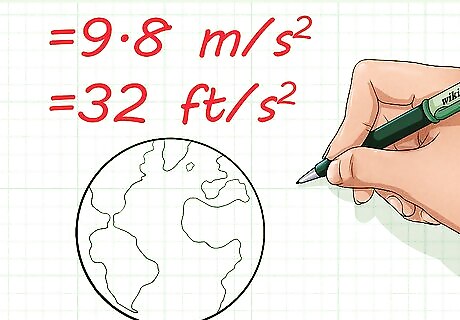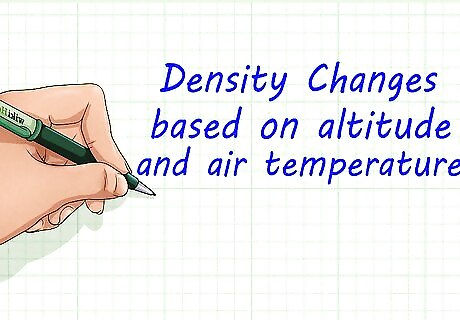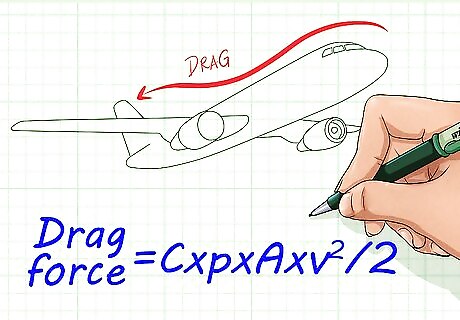
views
Find the Gravitational Force

Find the mass of the falling object. This should be measured in grams or kilograms, in the metric system. If you are using the imperial system, remember that pounds is not actually a unit of mass, but of force. The unit of mass in the imperial system is the pound-mass (lbm), which under the gravitational force on the surface of the earth would experience a force of 32 pound-force (lbf). For example, if a person weighs 160 pounds on earth, that person is actually feeling 160 lbf, but their mass is 5 lbm.

Know the acceleration due to the gravity of the Earth. Close enough to the earth to encounter air resistance, this acceleration is 9.8 meters per second squared, or 32 feet per second squared.

Calculate the downward pull of gravity. The force with which the falling object is being pulled down equals the object's mass times acceleration due to gravity, or F = MA. This number, multiplied by two, goes in the top of the terminal velocity formula. In the imperial system, this is the lbf of the object, the number that is commonly called weight. It is more properly the mass in lbm times 32 feet per second squared. In the metric system, the force is the mass in grams times 9.8 meters per second squared.
Determine the Drag Force

Get the density of the medium. For an object falling through the Earth's atmosphere, the density is going to change based on the altitude and the temperature of the air. This makes calculating terminal velocity of a falling object especially difficult, as the density of the air will change as the object loses altitude. However, you can look up approximate air densities in textbooks and other references. As a rough guide, the density of air at sea level when the temperature is 15 °C is 1.225 kg/m3.

Estimate the drag coefficient of the object. This number is based on how streamlined the object is. Unfortunately it is a very complex number to compute, and involves making certain scientific assumptions. Do not attempt to calculate drag coefficient yourself without the help of a wind tunnel and some serious aerodynamic math. Instead look up an approximation based on a similarly shaped object.

Calculate the projected area of the object. The last variable you need to know is the sectional area being presented by the object to the medium. Imagine the silhouette of the falling object seeing when looking up from directly beneath it. That shape, projected onto a plane, is the projected area. Again, this is a difficult value to calculate with anything but simple geometric objects.

Figure out the drag force that is opposing the downward pull of gravity. If you know the velocity of the object, but not the drag force, you can use the formula to calculate the drag force. This is (C*ρ*A*(v^2))/2.

















Comments
0 comment